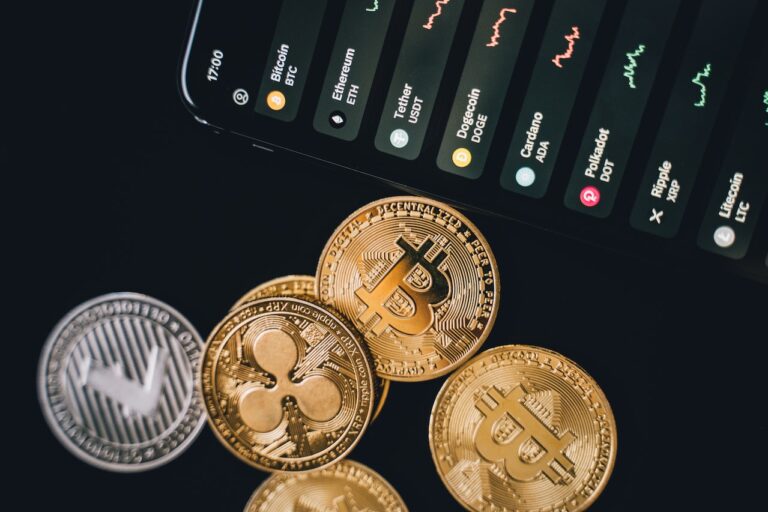Altcoins, short for “alternative coins,” refer to all cryptocurrencies other than Bitcoin. They are essentially alternatives to Bitcoin, offering different features, functionalities, or purposes. Altcoins can be created through various means, such as forking an existing blockchain, launching a new blockchain, or using smart contracts on platforms like Ethereum.
The term “altcoin” is often used to encompass a wide range of digital currencies, including established ones like Litecoin (LTC), Ripple (XRP), and Bitcoin Cash (BCH), as well as newer or more specialized cryptocurrencies.
However, the exact definition of altcoins can vary depending on the context. Some people consider altcoins to include all cryptocurrencies besides Bitcoin, while others exclude Ethereum, as it is a prominent platform for creating tokens and smart contracts.
Altcoins differentiate themselves from Bitcoin and Ethereum by offering unique features or addressing specific use cases.
Table of Contents
Pros and Cons of Altcoins
The following are the pros and cons of Altcoins:
Pros
- Diversification of investment opportunities: Altcoins offer investors the chance to diversify their cryptocurrency portfolios beyond Bitcoin. By investing in a range of altcoins, individuals can potentially mitigate risks associated with a single cryptocurrency and take advantage of different market trends and opportunities;
- Potential for higher returns: Some altcoins have experienced significant price increases, offering the possibility of higher returns compared to more established cryptocurrencies. Early investments in promising altcoin projects can lead to substantial profits if the projects gain traction and achieve widespread adoption;
- Innovation and technological advancements: Altcoins often introduce innovative technologies and features that aim to address limitations or provide additional functionalities compared to Bitcoin. These advancements may include faster transaction speeds, enhanced privacy measures, or the integration of smart contract capabilities. Such innovation can drive the overall progress of the cryptocurrency ecosystem.
Cons
- Higher volatility and risk: Altcoins, particularly those with lower market capitalizations, tend to exhibit higher price volatility than established cryptocurrencies. This volatility can lead to rapid price fluctuations and potential losses for investors. The lack of liquidity in some altcoin markets may also amplify this risk;
- Lack of regulatory oversight: Altcoins operate in a regulatory landscape that is still developing and can vary significantly across different jurisdictions. The absence of clear regulations may expose investors to potential scams, fraudulent projects, or illegal activities associated with certain altcoins;
- Potential for scams and fraudulent projects: The altcoin market has seen fraudulent projects or scams that aim to exploit unsuspecting investors. It is essential to conduct due diligence and research before investing in any altcoin, as some projects may lack substance or fail to deliver on their promises.
Types of Altcoins
Altcoins encompass a wide range of cryptocurrencies, each with unique features and purposes. Understanding the different types can provide insights into the diverse applications and functionalities within the cryptocurrency ecosystem. Here are some common types:
Cryptocurrencies:
- Bitcoin alternatives: These altcoins aim to improve upon the limitations of Bitcoin, such as scalability or transaction speed. Examples include Litecoin (LTC), Bitcoin Cash (BCH), and Bitcoin SV (BSV);
- Privacy-focused coins: These altcoins prioritize privacy and anonymity in transactions. Examples include Monero (XMR), Zcash (ZEC), and Dash (DASH), which employ various privacy-enhancing technologies;
- Smart contract platforms: These altcoins, such as Ethereum (ETH), Cardano (ADA), and Binance Smart Chain (BSC), enable the execution and creation of smart contracts, allowing developers to build DApps and programmable digital assets.
Tokens:
- Utility tokens: These tokens serve a specific purpose within a blockchain ecosystem. They can represent access to a product or service, voting rights, or the ability to interact with DApps. Examples include Basic Attention Tokens (BAT) and Chainlink (LINK);
- Security tokens: These tokens represent ownership or shares in real-world assets, such as company stocks, real estate, or commodities. Security tokens aim to comply with regulatory frameworks and provide investors with traditional financial rights and protections;
- Stablecoins: These are designed to maintain a stable value by pegging their price to a reserve asset, typically a fiat currency like the U.S. dollar. Stablecoins provide stability and can be useful for trading and storing value within the cryptocurrency ecosystem. Examples include Tether (USDT), USD Coin (USDC), and Dai (DAI).
Read also: Litecoin, imminent halving: what will happen to the cryptocurrency behind BTC
The Future of Altcoins
The future of altcoins holds exciting opportunities and potential challenges as the cryptocurrency landscape continues evolving. Here are several factors that may shape their future:
- Increased adoption: As cryptocurrencies gain wider acceptance and understanding, altcoins have the potential to experience increased adoption. This could be driven by businesses integrating altcoins into their payment systems, individuals embracing alternative digital currencies, or governments recognizing their utility;
- Regulatory clarity: Regulatory frameworks are continuously evolving. As governments and regulatory bodies provide clearer guidelines for cryptocurrencies, it can instill investor confidence and attract more institutional participation in the altcoin market;
- Interoperability: Altcoins might focus on interoperability, allowing different blockchain networks to communicate and share data seamlessly. This interoperability can promote collaboration between different altcoin projects and increase their overall utility and value.
Alternative coins offer unique features and investment opportunities
Altcoins have emerged as a diverse and dynamic segment of the cryptocurrency market, offering unique features, investment opportunities, and potential for innovation. While they provide diversification and the chance for higher returns, they also come with risks such as volatility, regulatory challenges, and the potential for scams.
The future of altcoins will be shaped by factors such as market trends, adoption by mainstream industries, regulatory developments, technological advancements, and the ability to address challenges effectively.
By staying informed, conducting due diligence, and understanding the nuances of different altcoins, investors can navigate this evolving landscape and participate in the transformative potential they hold for the future of finance and technology.
Read also: US Chamber of Commerce backs cryptocurrencies, SEC in trouble












